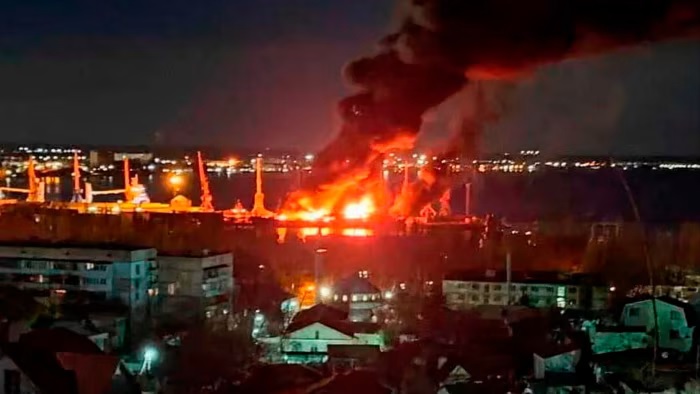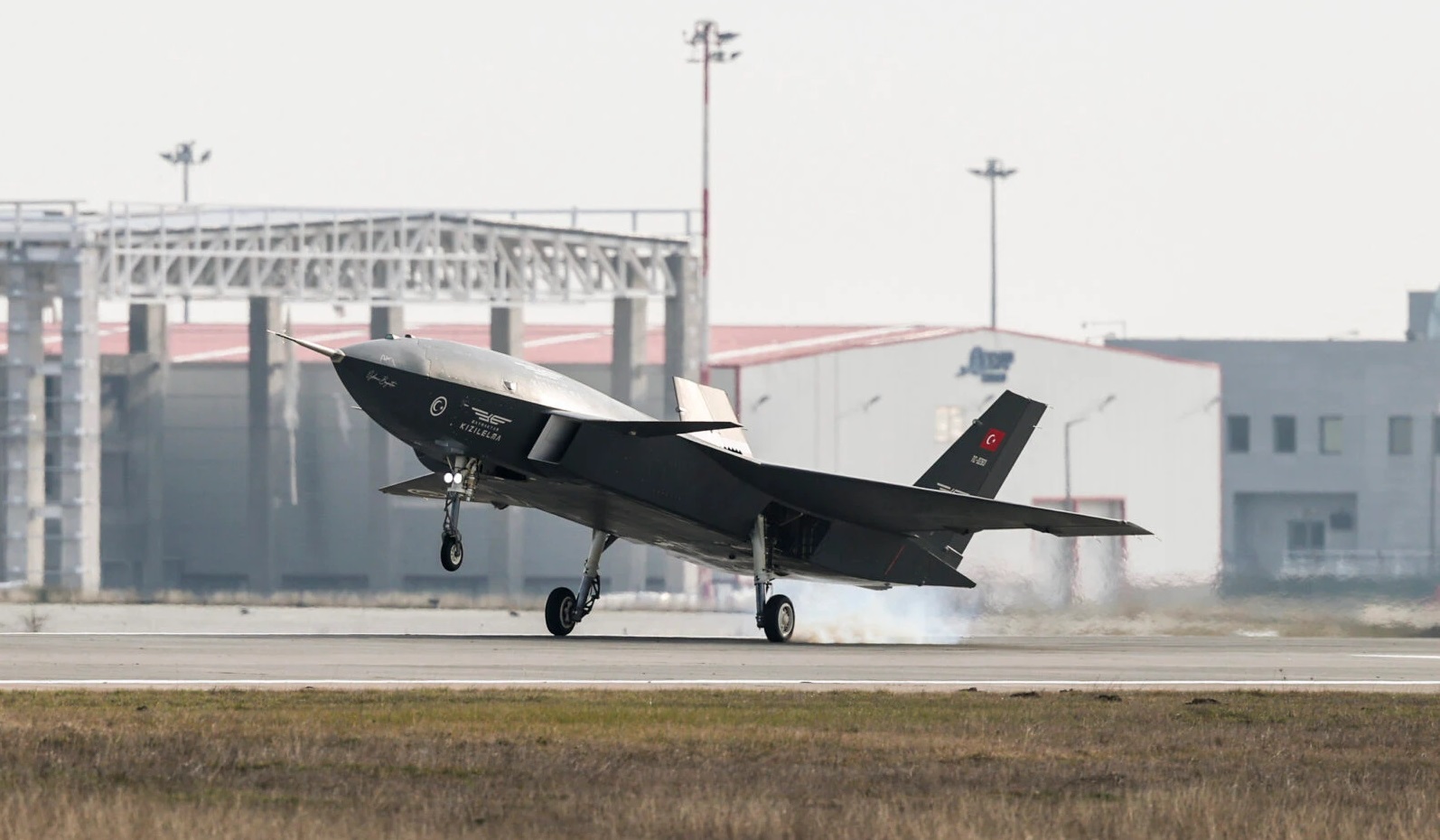Russia Abandons Naval Ship Repairs in Crimea Amid Escalating Ukrainian Strikes

Russia has halted all naval ship repair activities in Crimea due to the growing intensity of Ukrainian strikes, according to Ukrainian Navy spokesperson Dmytro Pletenchuk. This development signals a significant shift in the operational strategy of Russia’s Black Sea Fleet, which has been forced to relocate its warships from the Sevastopol naval base in Crimea to the port city of Novorossiysk.
The decision follows a series of successful Ukrainian attacks utilizing missiles and drone boats. These strikes have caused extensive damage to Russian naval assets, sinking or crippling dozens of warships, including a possible submarine. Pletenchuk underscored this in a recent telethon, stating, “The main facilities for the Russians are still in Crimea. But we’ve demonstrated in practice that using repair bases for their Black Sea fleet is no longer possible.”
Novorossiysk: A Partial Solution
While Novorossiysk has become the alternative port of choice for the Black Sea Fleet, it lacks the comprehensive ship repair capabilities available at the Sevastopol naval base. The facility in Novorossiysk can handle basic maintenance but falls short in terms of advanced repair operations needed for larger and more complex vessels.
Another potential facility, located in Zelenodolsk, Tatarstan, lies over 2,200 kilometers (1,367 miles) away from Crimea. However, its capabilities are limited to smaller missile ships, making it both inefficient and cost-prohibitive for the repair of larger naval vessels.
Strategic Implications for Russia
The inability to use Sevastopol’s shipyards has far-reaching consequences for Russia's naval operations in the Black Sea. Sevastopol has historically been a critical hub for maintenance and repairs due to its advanced infrastructure and strategic location. The ongoing Ukrainian strikes have effectively neutralized this advantage, forcing Russia to rely on less-equipped alternatives and increasing the logistical challenges of sustaining its naval presence.
Pletenchuk emphasized that repairing warships at Sevastopol has become virtually impossible. “To repair their ships, they first need to bring them there. And now, no one will be doing that,” he remarked, highlighting the growing risks associated with operating in Crimea.
Ukrainian Strategy and Successes
Ukraine’s persistent targeting of Russian naval assets demonstrates a well-coordinated strategy to weaken Russia's Black Sea Fleet and its operational capabilities. The use of innovative attack methods, including drone boats and precision missile strikes, has been pivotal in inflicting significant damage on Russian warships. These efforts are part of Ukraine’s broader strategy to regain control over Crimea and assert dominance in the Black Sea region.
A Shifting Naval Landscape
The relocation of Russia’s Black Sea Fleet to Novorossiysk marks a significant adaptation in response to evolving threats. However, the lack of suitable repair facilities is a critical vulnerability that could impede Russia’s naval operations in the long term. As Ukrainian forces continue to escalate their offensive against Russian naval targets, the strategic importance of Crimea as a naval hub diminishes, reshaping the dynamics of the conflict in the Black Sea region.
This shift not only underlines the impact of Ukrainian military innovation but also serves as a reminder of the increasingly precarious position of Russian forces in occupied territories. The loss of Crimea's naval repair capabilities is a strategic setback for Russia, highlighting the growing effectiveness of Ukraine’s counteroffensive efforts.



